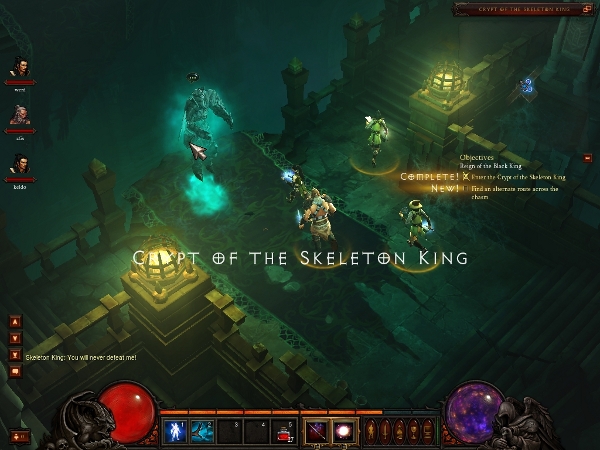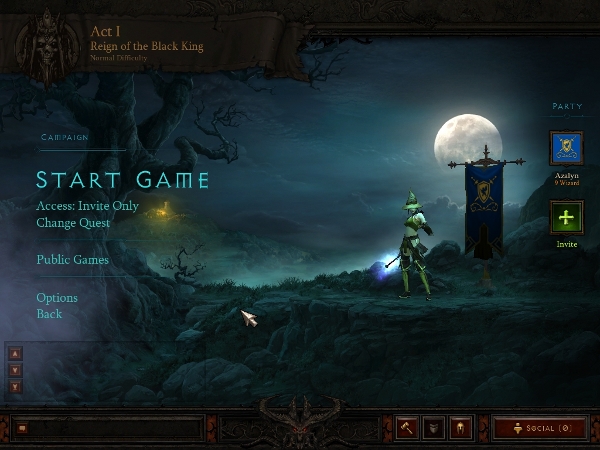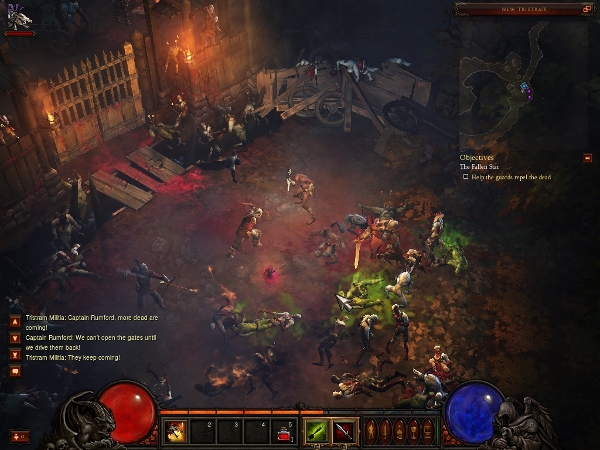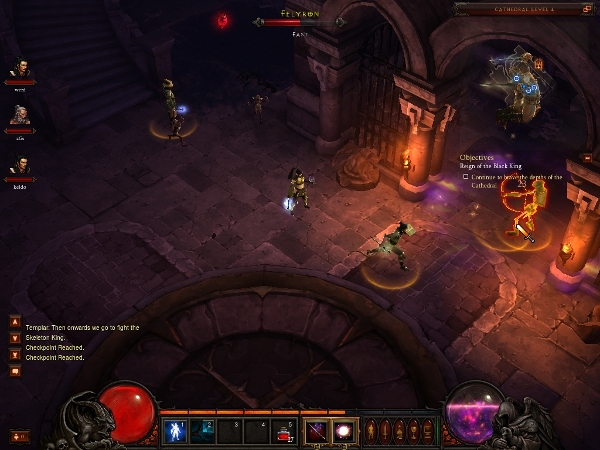
I finally got around to writing my review of the beta about a month after the Diablo III beta was released.
If you’re a Blizzard fanboi, you know you will play this game. No matter how much you rail and complain about the cost or the extended wait, you will buy and play this game.
For example, I capitulated and ended up buying Starcraft 2 a month after it was released even after I screamed about the cost. Figures.
In any case, Diablo is a game that inspired a whole generation of clones in the action role-playing genre, and that alone makes it worthy to check out.
Familiar, yet different
So how is the Diablo 3 beta?
Dark brooding atmosphere? Check.
Lots and lots of loot? Check.
Fast paced action and frenetic mouse clicking? Check.
Dozens of skills? Check.
Sprawling tech tree? Check…nope, not so fast mister.
Gone are the detailed skill trees, where you had to spend points to level up to get skills and improve them.
Here, you automatically get skills as you level up, and they all improve as you rise with experience.

You would think that this would make it super boring as everybody in the same class will, well, be exactly the same. Diablo 3 has five classes: barbarian, demon hunter, monk, witch hunter and wizard.
Not true. The catch is that although you know many skills, you can only use a certain number of skills as the hotkeys given to you are limited.
For example, by the end of Act I, I only had two hotkeys and two mouse buttons buttons to bind skills to, though my Wizard had over 12 abilities to choose from.
This allows you to switch to different play styles as you need on the fly, and not having to worry about “spec-cing” wrongly when you build your character.
It rewards experimentation and trial-and-error. Though initially unused to this mechanic, I give it two thumbs up after playing the Diablo beta for about six hours.
A more streamlined play experience
Blizzard also added tweaks that streamline play.
For one, there is no more forgetting to load up on town portal scrolls. There is now one permanent summoning hearth stone (WoW fans will recognize this reference!) that you can use at all times.
Gone is also the need to load up on identify scrolls. Most items come identified, except for the rarest of them all.
Then there is the Cauldron of Jordan, a permanent item in your inventory that allows you to transmute any item into gold at any time, which saves you trips back to town to divest yourself of the lots of loot that you get.
Diablo 2’s Horadric Cube gets replaced by the Nephalem Cube, which, instead of combining items, breaks them down instead into basic parts like leather scraps and iron bits. These can be used to craft items back in town.
Pets can be acquired for short durations, which will automatically pick up items and gold instead of you having to click on them.
The interface and quest logs are very clearly labeled, with good automapping functions, so in this essentially linear game — at least for the first Act of Diablo 3’s beta — it is impossible to get lost.

Diablo 3, a game forever in the making
Had I not played and loved the hell out of Torchlight, I would be more impressed by the gameplay tweaks that were made to Diablo 3.
Pets that pick up loot, easy ways to sell items whilst in dungeons, well-designed waypoint systems all made Torchlight a streamlined blast to play. This indie game was also sold at a nice inexpensive price — under US$15 I believe — on the Steam store.
Torchlight came out in late 2009 whilst fans were patiently waiting for Diablo 3. It is now late 2011 and Diablo 3 won’t even be released till in early 2012.
As I played the Diablo 3 beta campaign, which only allows you to finish Act I, I wondered if Diablo 3 feels well, a little old and stale compared to similar genre titles like Torchlight, Sacred 2 and the recently released and brilliant Bastion.
That was until I tried Diablo 3’s multi-player.

Brilliant multi-player
One thing I like was that you can easily get a pick-up group of random folks to play chapters in any Act.
Either join an existing group or create one yourself. You don’t even have to wait as players will come in and out of the group game, and the mobs will scale in difficulty depending on the group.
Players can get to each other easily (there’s a teleport to player function in town). The game scales and plays fluidly as players enter and leave, and sometimes you don’t even notice, which is the hallmark of a good backend architecture.
Here’s also where the tech-treeless system of Diablo 3 really shines.
Stuck in a group with three wizards using similar skills? Mash it up with different skills on the fly and the entire play experience still feels different.
The player vs. player function is not available on the beta yet and I couldn’t test this, but the campaign multi-player mode was something that stood out.
Diablo 3 had better not take too long though.
The main thing that Torchlight was criticized for was the lack of multiplayer. This will be rectified in Torchlight 2, which will be out by the end of this year, before Diablo 3 comes out.
One thing is sure though: Diablo 3 is a game that come hell or high water, Blizzard fanbois will try.





I have played diablo 2 for years, got on the overall hardcore ladder and died at 76. Also played starcraft for crazy amounts of time. Never bought starcraft 2, and not buying diablo 3. They just don’t seem to be made for a gamer like me. All the best though.